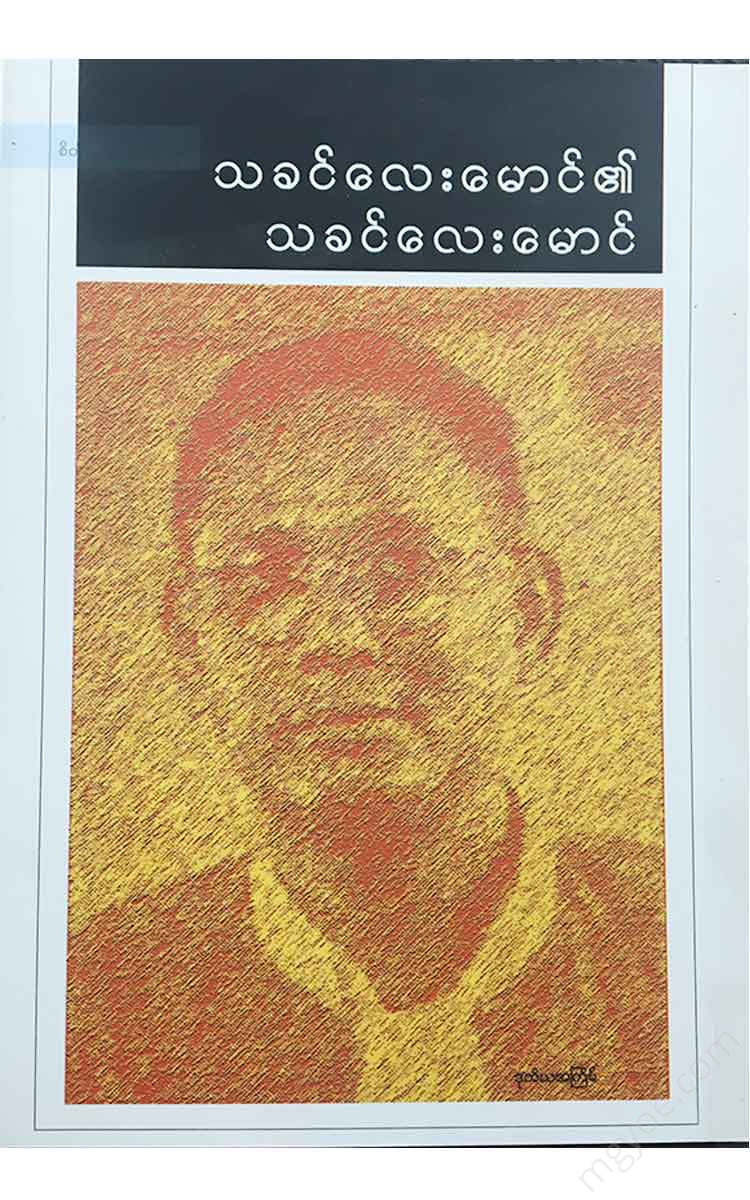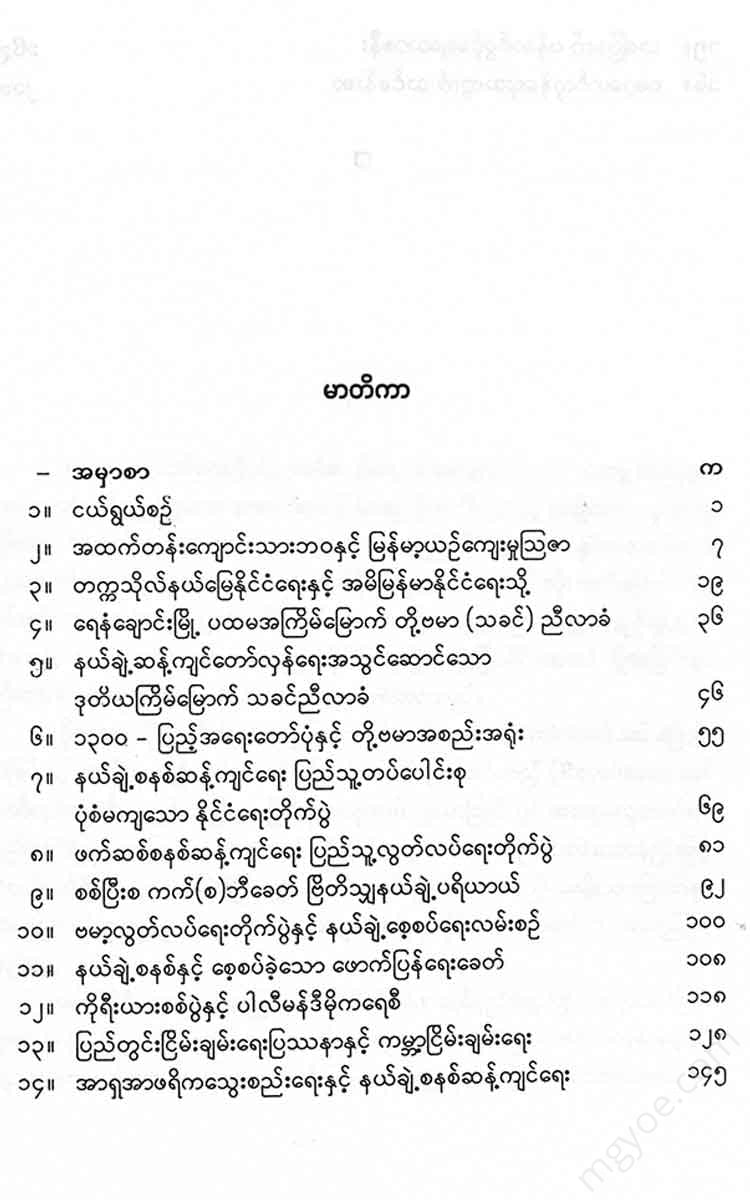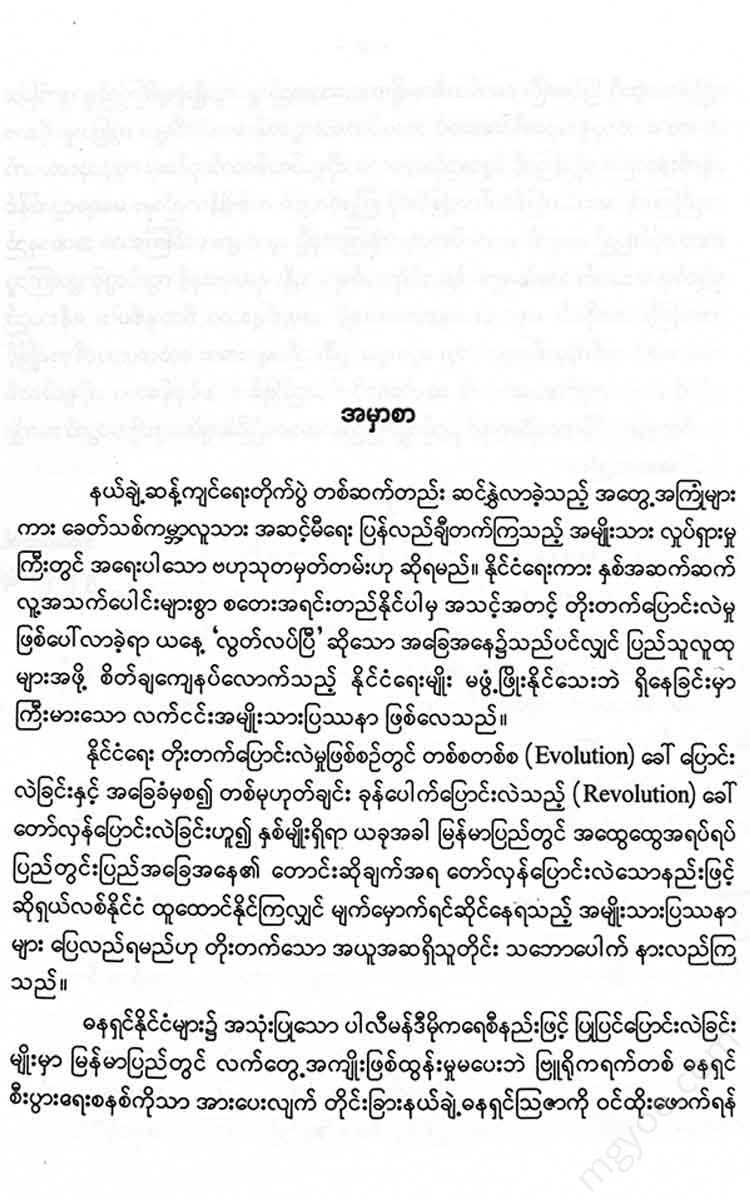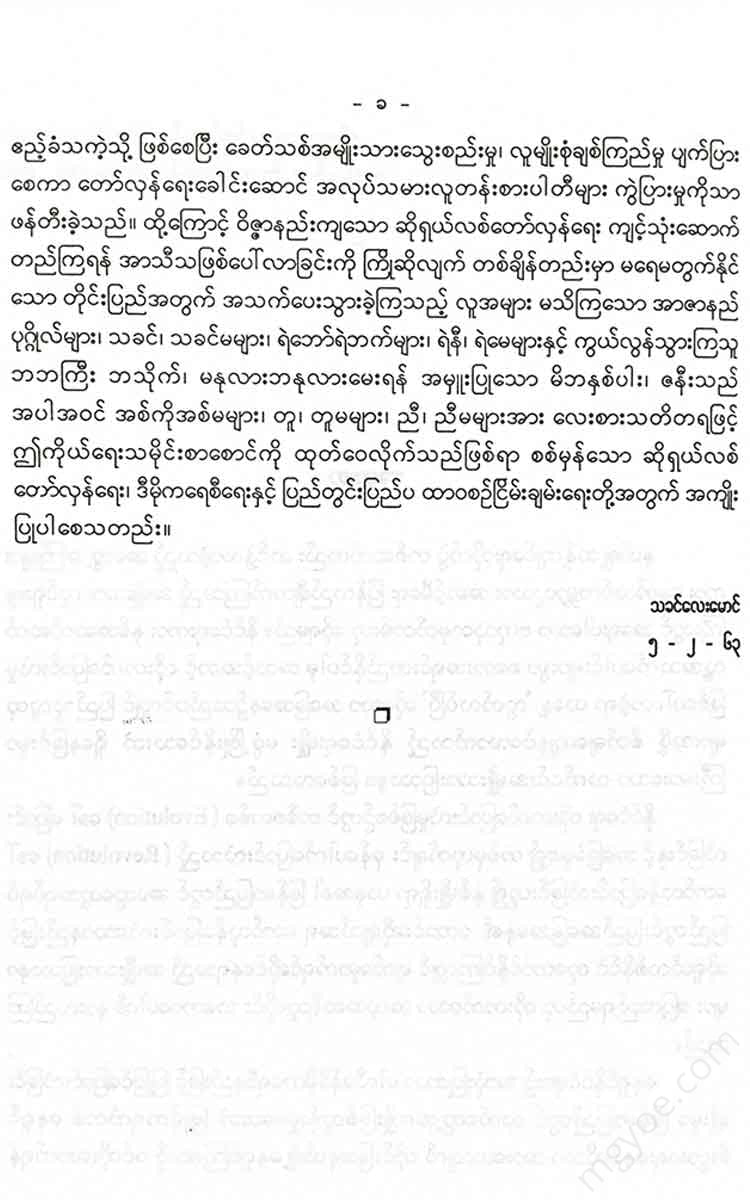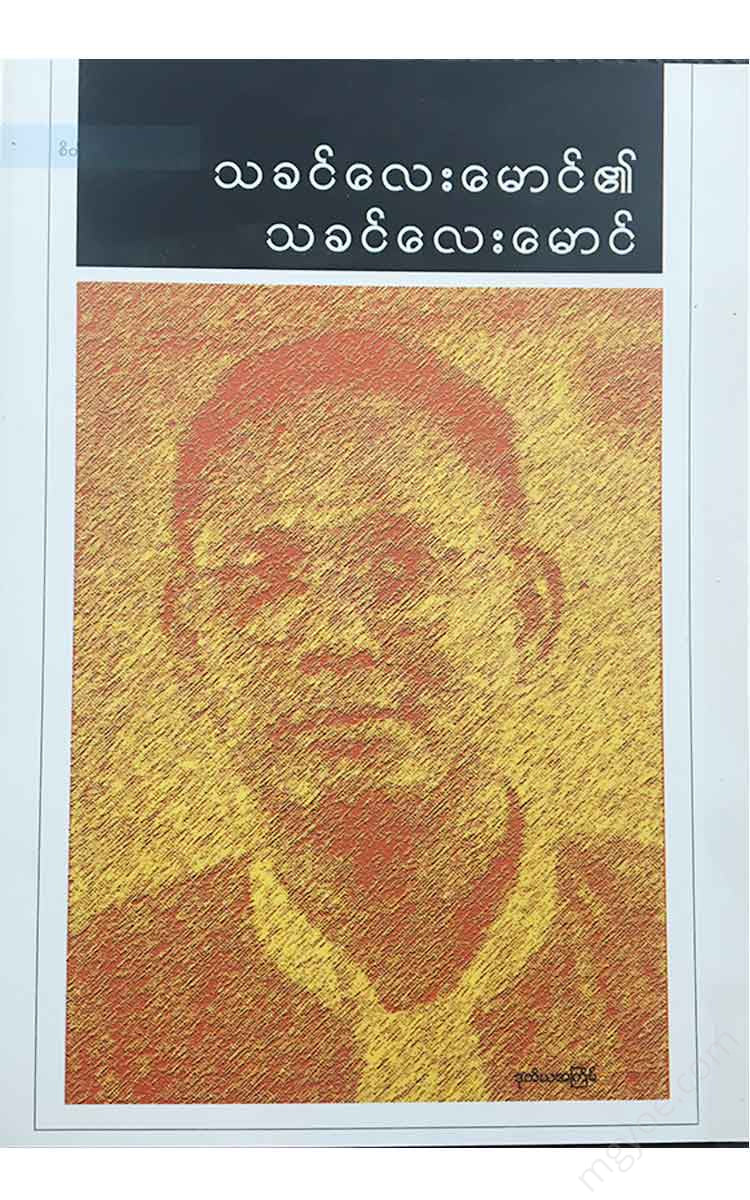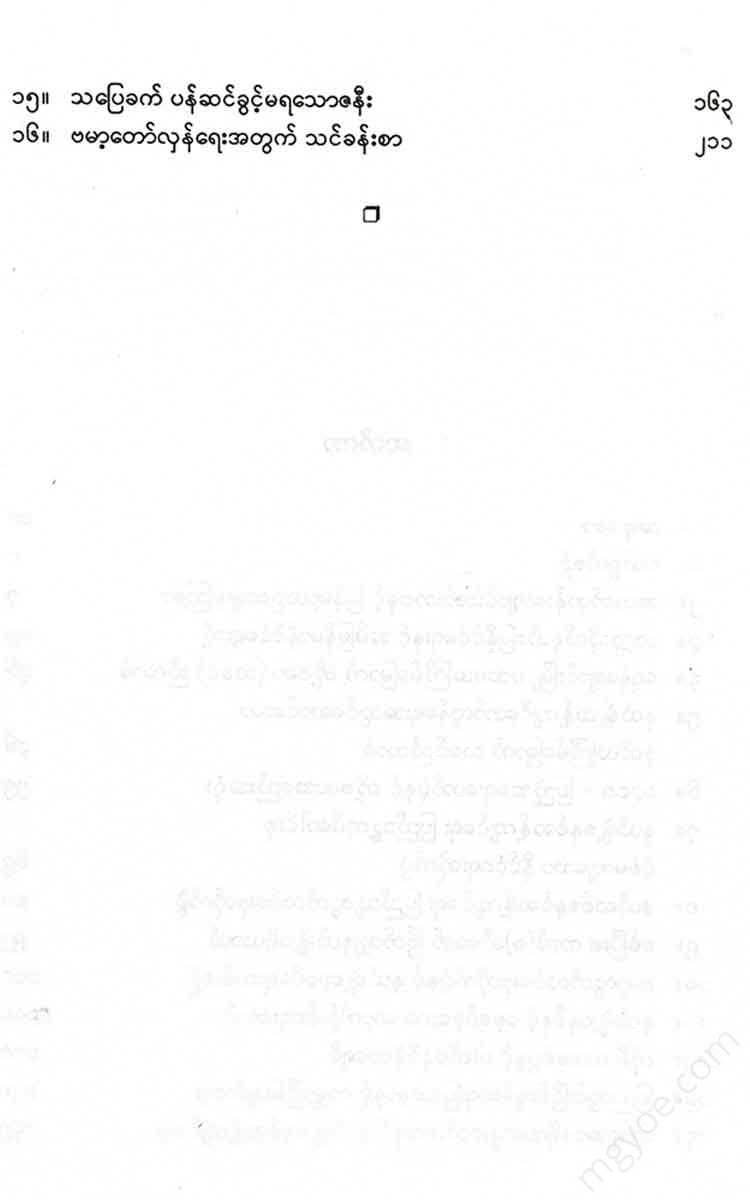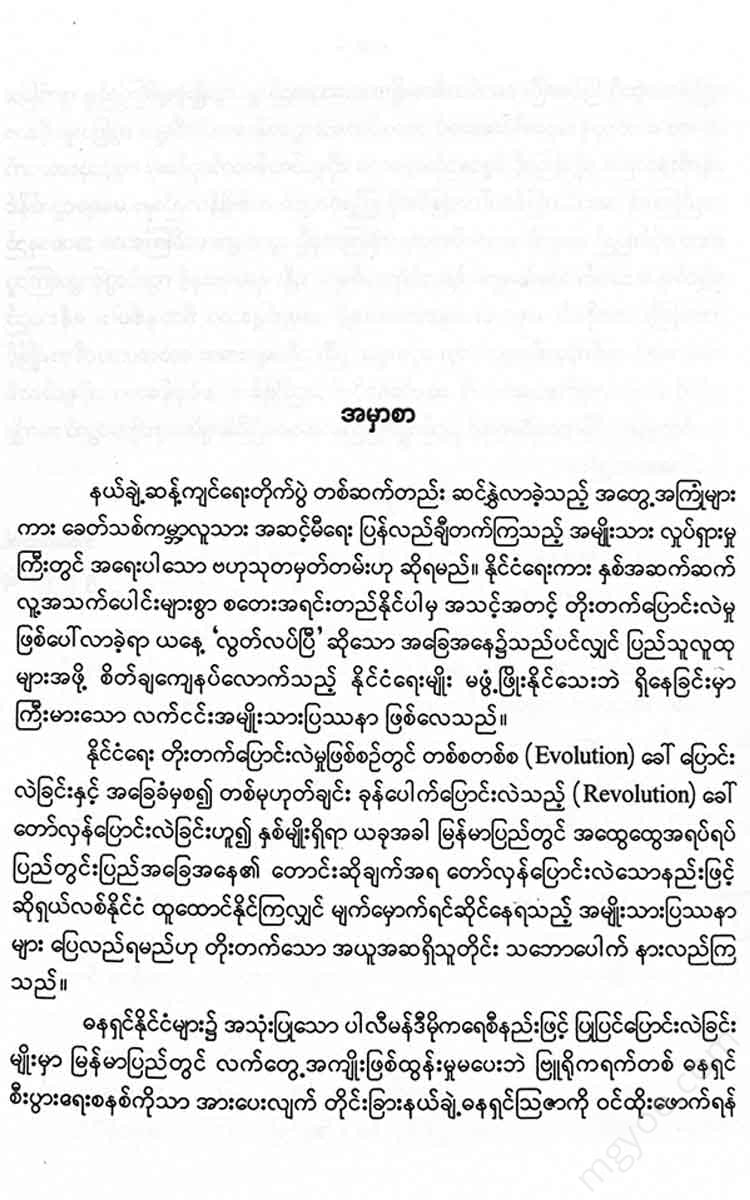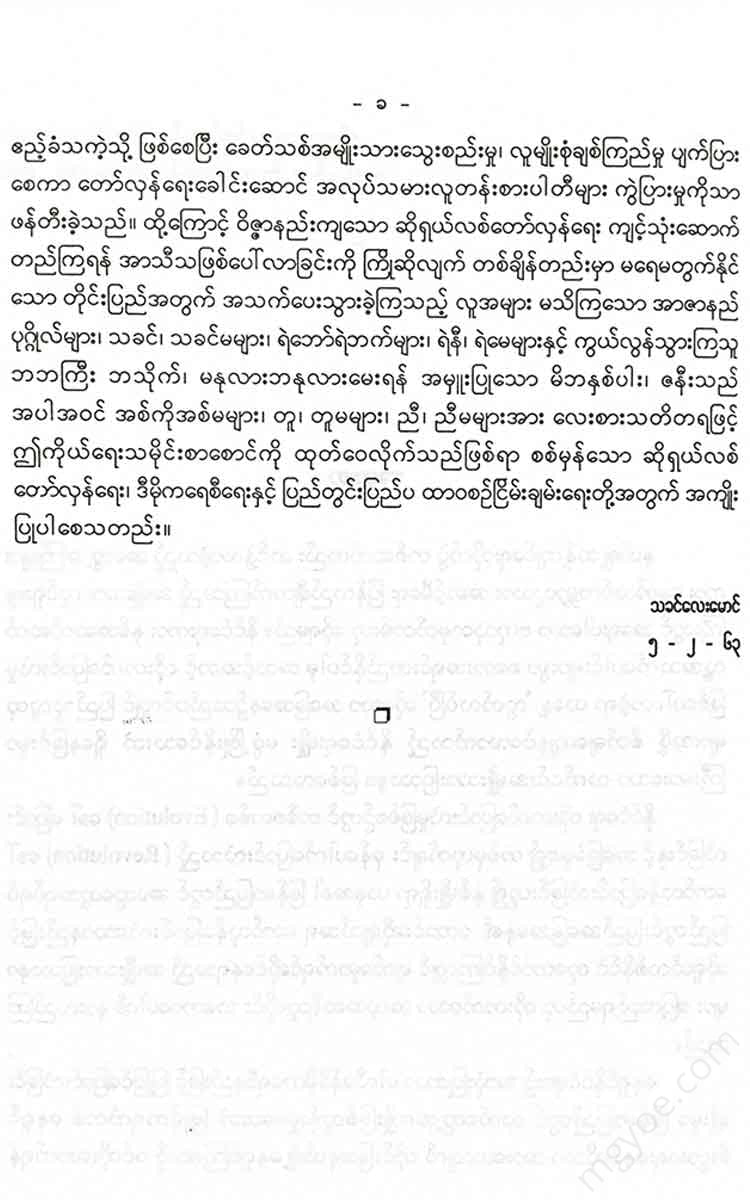စိတ်ကူးချိုချိုစာပေ
Mr. Lay Maung - Mr. Lay Maung's Mr. Lay Maung
Mr. Lay Maung - Mr. Lay Maung's Mr. Lay Maung
Couldn't load pickup availability
On the 8th day of the second Waso month, Wednesday, 1269 (1908 AD), he was born to Daw Tint, a mother who observed the eight precepts, in the village of Nyaung-eun, Chaung-u Township, Sagaing District, and his father was U Bo Tun. Nyaung-eun village was located on the east bank of the Chindwin River (called Sallawady) and relied on farming and fishing, making it a good place for up-and-down trade along the river. In the ancient Inwa period, after the establishment of the Nyaung-eun prince, successive Burmese kings established their offices in the city, and since it was a city where the Nyaung-eun, the five-city military chiefs, etc., had their headquarters, there are many pagodas and pagodas, and the basic works of ancient Burmese culture can still be seen today.
My parents were middle-class people who originally made a living through farming and trading. After the First World War, due to the global food shortage, they experienced good prices for rice, beans, and corn, and enjoyed a moderate income, but in the unstable price situation, they faced crises like other middle-class people in the future. Since I was in the third grade of the high-rise village world school, my parents' economic situation has been unstable. Sagaing City Government English-Burmese High School
He was even allowed to continue his education in 1920 because he received a scholarship called the Village Public School Fourth Grade Scholarship for five years.
Sagaing is located on the confluence of the Ayeyarwady River and the Myit Nge River, opposite the old city of Innwa, and is close to the old capitals of Myanmar such as Mandalay and Amarapura. It is famous for its historical Kaungsuma Pagoda, Thuparyon Pagoda, Five-storey Pagoda, Sintaka Shin Pagoda, Sagaing Mountain Suan U Ponya Shin Pagoda, as well as the colonial-era Innwa Railway Bridge that crossed the Ayeyarwady River. It has been the seat of the king and the district governor from the British era to the present day, and despite its modern features, it is a green city with traditional Burmese handicrafts, weaving, and fruit and vegetable gardening. Part of the Minwan Mountains, Sagaing Mountains
It is also a religious retreat where monks and nuns who practice mindfulness and mindfulness reside along the cliffs, so few people in Myanmar know about Sagaing City and Sagaing Mountain.
For a thirteen-year-old young man who had to transfer from a rural high school to the Government English-Myanmar High School in Sagaing, facing new environmental conditions, breaking free from the guardianship of his parents and relatives, boarding school, living in the same house with the group, eating together, and studying under new people who were disciplined and supervised in the same school, was truly a transition to a new life.
As a government high school, in addition to day students from the city, government-sponsored scholars from the Chin State region of Sagaing Region, Myitkyina, Bhamo, Mogok, and Shan State have come to live and study there, and student life has expanded unexpectedly, creating a modern student community.
The headmaster was a white man named Mr. Flesin. He was meticulous in maintaining discipline, proficient in teaching high-level English, and firm in dealing with students. Every Monday morning, at about 8 o'clock, when the boarding school (in-service) was inspected, at the instigation of the student leader, the boarding students had to clean the entire hall, including the beds and bedding, and they had to shower and dress themselves ready for school, and they stood up and saluted the headmaster at their respective beds. I still remember that to this day.
The total number of students who were educated in such a strict and disciplined manner, about three hundred, was very strong and civil servants under the great influence of the British government. Although the colonial education system seemed to be very good on the surface, it was not a solid and solid human structure. Even in 1920, when I started teaching, I clearly saw this when a large university student strike against colonial slave education took place in the midst of a nationwide national political movement. The boarding students, including myself, led the
On a cold December evening, more than fifty students marched together in carts to a monastery at the foot of Sagaing Mountain, then to the Five-Tall Pagoda Road to the monastery. This was the first step in the Sagaing Government High School Student Strike.
On the second day of the strike, we learned from the clear speeches of the student leaders that we were participating in the strike against the University Act and the establishment of national education from Sagaing. The various patriotic people in the city also came to send us the necessary food, which was inexhaustible. On that day, more than two hundred students did not attend the government school, which had more than three hundred students, and the school was closed, which was a disgrace to the rulers, as the school discipline was violated and the students were humiliated.
The student strike was supplemented by the struggle against British goods, the struggle against British culture, the struggle to wear the traditional red and white pin, the struggle to help each other, and the struggle to shave the head instead of the headscarf. At the same time, the students sacrificed their lives to open free schools, and a nationwide movement for the development of national education suddenly emerged.
In Yangon, with the voluntary help of the student leaders of the strike and the historian U Lun (now the late Thakin Htin Taw Hmong), Deedok U Ba Cho (deceased), U Pho Kyar (deceased), and others, a national college was opened in Bahan Ward, and national high schools and middle schools were also opened in other cities, each with their own national public spirit and practical actions.
For a young student, the strike was generally understood as a struggle against the British government for national education, and although the situation forced him to return to the government school with many other young students, the strike leader
The fact that the students, who were able to climb the steep cliffs and hold a series of strikes and struggles, sacrificed their labor as national teachers must be recorded as a commendable and respected feat.
Thus, while I was continuing my studies with other students, struggling to master English, which was not my mother tongue, while continuing to strike, I was happy to hear that the 9th GCBA (Wan Thanu League) conference was held in Mandalay and that the decision to recognize the 10th day of the waning moon of the Ta Saung Mone, the day the students started their strike, was recognized as the National Day. At the same time, I was saddened to see a British servant, a Burmese puppet education minister, visiting Sagaing, in order to divert the path from the true development of national education.
These are the political experiences of a young student who studied in Sagaing for five years when he was young. Now, if we review them, we can see how the life of the youth, the traditional and natural values of the youth, the modern student relations system of the youth, and the national cultural visions of the youth have developed in the changing living environment, and what things have suppressed these visions, and what systems have created a path of deviation. We can also see how much the economic situation of the parents, the situation of the surrounding villages, the positive and negative effects of the entire government education system, and the political, economic, and cultural affairs of the entire nation have manipulated the process of the youth's development. At the same time, the path of development of all young people is hindered by economic obstacles, educational obstacles, political obstacles, It can be seen that it is a long and difficult road to struggle against the obstacles and manipulations of the ethnically separatist government.
At that time, from the perspective of students and their experiences, the Diarchy regime was generally understood to be an administration that opposed national awakening, national unity, and national education. However, its deep political intrigues of dividing and oppressing the entire nation were not well understood.
At that time, the political ambition of the Burmese people, especially a group of intellectuals from the British era, was not complete independence in line with Burmese tradition. It was only for the right to self-government under the British colonial rule. Therefore, the reformist (opportunist) Golden Valley Party and the 21-U Party propagated that the dyarchy rule was acceptable by giving the Burmese people the opportunity to learn how to govern themselves. This meant that those who had been governing their own country for more than a thousand years were being educated under the British and continued to be slaves. This was unacceptable to many Burmese of native origin. Therefore, not only the natural view of the students, but also many ordinary Burmese people clearly boycotted this rule.
